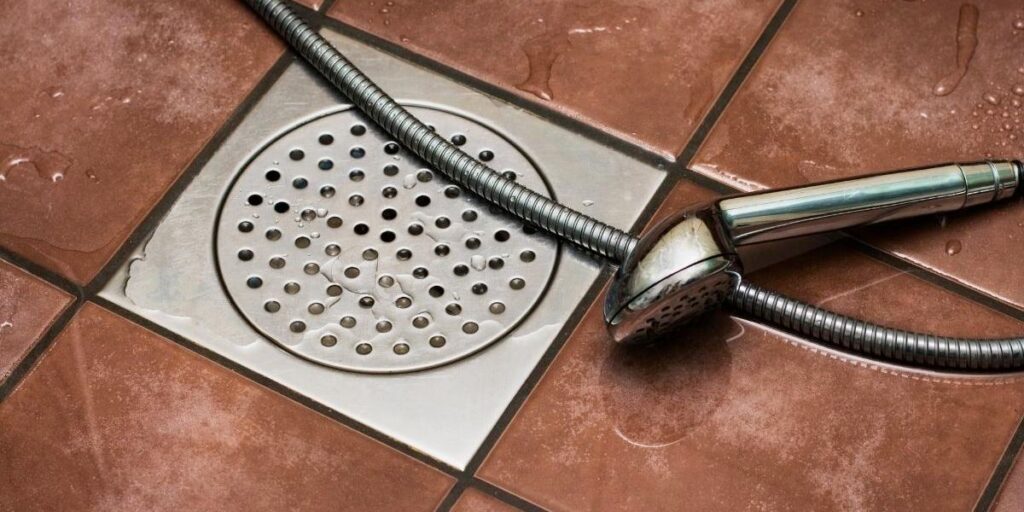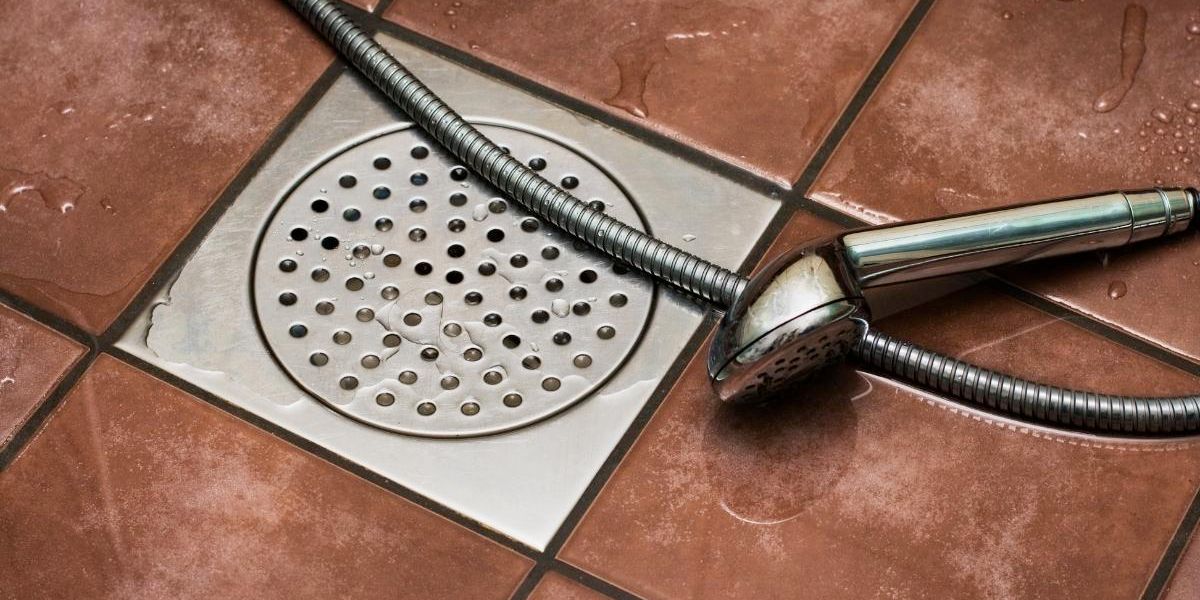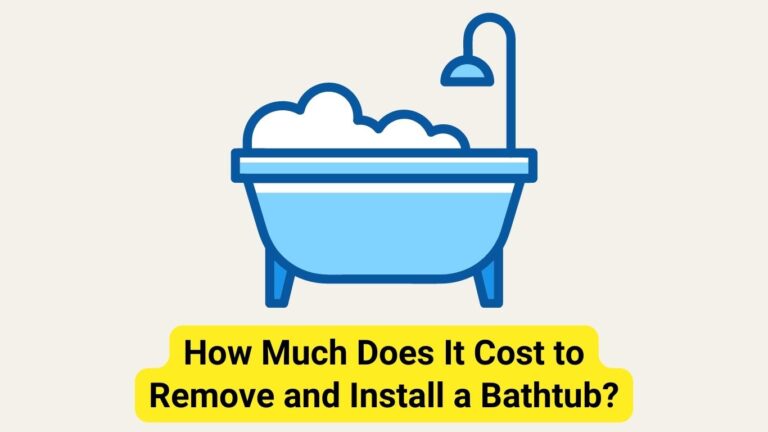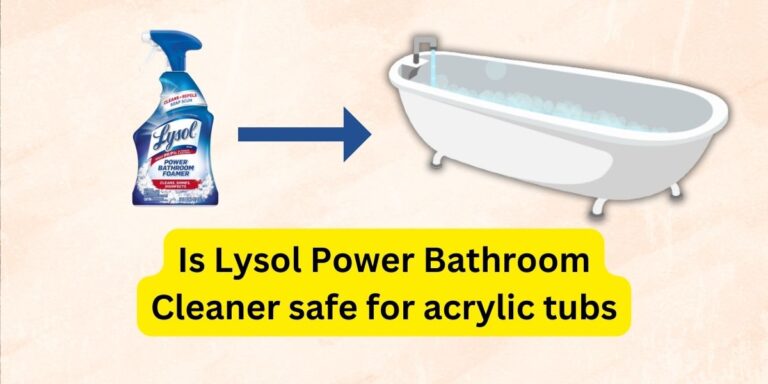Shower Drain Won’t Stay Open | What To Do?
Ever encountered the frustrating situation when your shower drain simply refuses to stay open? Believe me, I understand your predicament! It can turn an otherwise enjoyable shower experience into a complete disaster, leaving you ankle-deep in water and feeling defeated.
I’ll share some valuable tips and tricks to help you get your drain functioning properly again. From identifying the underlying causes to easy DIY solutions, you’ll be able to tackle this issue head-on and have your drain flowing freely in no time!
Types of Shower Drains and Their Mechanisms
Before we dive into troubleshooting your shower drain, it’s essential to understand the different types of shower drains and their mechanisms. By familiarizing yourself with these, you’ll be better equipped to identify and resolve any issues you encounter. Let’s explore the various types of shower drains together.
| Type of Shower Drain | Mechanism |
|---|---|
| Pop-Up Shower Drains | The drain stopper pops up and down to control water flow. |
| Lift-and-Turn Shower Drains | The drain stopper lifts and turns to control water flow. |
| Push Button Shower Drains | The drain stopper is pushed down and popped up with a button. |
Pop-Up Shower Drains
Pop-up shower drains are a popular choice due to their convenient mechanism. With these drains, you can easily control the water flow by simply popping the drain stopper up or down. When the stopper is in the up position, water can freely flow down the drain. Conversely, when the stopper is pushed down, it creates a seal, preventing water from draining.
Lift-and-Turn Shower Drains
If you have a lift-and-turn shower drain, you’ll notice that the stopper operates differently than a pop-up drain. To control the water flow, you need to lift and rotate the stopper.
By lifting it, you can allow water to flow down the drain, and by turning it, you can create a seal to prevent water from draining. It’s important to ensure the stopper is tightly closed when showering to avoid any water leaking onto the floor.
Push Button Shower Drains
Push button shower drains offer a straightforward mechanism for controlling water flow. With the push of a button, you can easily open or close the drain. When the button is pressed down, the stopper seals the drain, preventing water from escaping.
Pressing the button again releases the stopper, allowing water to flow freely down the drain. It’s crucial to ensure the stopper fully pops up after use to prevent any drainage issues during your next shower.
Recognizing the type of drain mechanism in your shower is a crucial first step in troubleshooting any issues you may encounter. Now that we’ve covered the different types of shower drains, let’s move on to the next chapter where I will guide you through addressing common problems with these mechanisms.
Factors to Consider: Why Your Shower Drain Won’t Stay Open

Now, let’s dive into the potential reasons why your shower drain seems to be on strike lately. There could be a few factors at play, but fear not, I’m here to help you troubleshoot this pesky issue.
Clogging and Blockage Issues
One of the most common culprits behind a shower drain that won’t stay open is a clog or blockage. Over time, hair, soap scum, and other debris can accumulate in the drain pipes, restricting the water flow. When this happens, you may notice that your drain is slower than usual or even completely blocked.
Potential Mechanical Faults
Another reason why your shower drain refuses to stay open could be due to mechanical faults. Sometimes, the stopper or strainer mechanism can become dysfunctional, preventing proper drainage. Additionally, if the drain was improperly installed or has loose parts, it can cause issues with water flow.
Age and Wear of The Shower Drain
This is where the undeniable effects of time come into play. Just like any other component in your home, your shower drain can wear out over the years. Corrosion, rust, and deterioration can take a toll on its efficiency. If your drain has seen better days, it may struggle to stay open, leading to frustrating drainage problems.
Remember, each of these factors can contribute to your shower drain’s rebellious behavior, but it’s often a combination of these issues rather than just one. By identifying the underlying cause, you can take the necessary steps to address and fix the problem. I know it’s a nuisance, but believe me, finding a solution will save you from the headache of constantly battling a stubborn drain.
Step-by-Step Guide: How to Keep Your Shower Drain Open
However, dealing with a stubborn, clogged shower drain can be frustrating. The good news is that there are steps you can take to keep your shower drain open and prevent future blockages. In this chapter, I will provide you with a simple and easy-to-follow guide to help you maintain a smoothly flowing drain in your shower.
Tips for Preventing a Blocked Shower Drain
When it comes to preventing a blocked shower drain, a little bit of effort can go a long way. Here are some effective tips that you can follow:
- Use a drain cover: Placing a drain cover over your shower drain can help catch hair, soap scum, and other debris before they go down the drain. This will significantly reduce the chances of blockage.
- Regularly clean the drain cover: Remember to clean the drain cover regularly to remove any trapped debris. A simple rinse can do the trick.
- Avoid pouring grease down the drain: Grease can solidify and cause stubborn clogs. Dispose of grease properly in a container and discard it in the trash.
- Install a water softener: Hard water can leave mineral deposits in the pipes, leading to blockages. Consider installing a water softener to prevent this buildup.
- Flush with hot water: Once a week, pour a pot of hot water down the drain to help dissolve any accumulated soap scum or debris. You can also add a cup of baking soda followed by a cup of vinegar for added cleaning power.
- Avoid using chemical drain cleaners: While they may seem like an easy solution, chemical drain cleaners can damage your pipes over time. Opt for natural alternatives or call a professional if you’re facing a stubborn clog.
Assume that by following these preventive measures consistently, you can significantly reduce the chances of experiencing a blocked shower drain.
A DIY Approach to Fixing an Uncooperative Shower Drain
If your shower drain is already clogged, don’t worry! You can try fixing it yourself with this simple yet effective DIY method:
1. Remove the drain cover: Carefully lift the drain cover using a screwdriver or any appropriate tool. Be gentle to avoid causing any damage.
2. Use a plunger: Place a plunger over the drain and create a tight seal. Push up and down vigorously for a few seconds to dislodge the clog. Repeat if necessary.
3. Employ the power of baking soda and vinegar: Pour half a cup of baking soda followed by half a cup of vinegar down the drain. Let the mixture fizz for about 15 minutes. Then, flush with hot water to rinse away the loosened clog.
4. Use a drain snake: If the clog persists, try using a drain snake to break it up. Insert the drain snake into the drain and turn the handle to dislodge the blockage. Pull out the snake, along with any debris, carefully.
5. Replace the drain cover: Once the drain is clear, clean the drain cover and place it back securely. Ensure it fits snugly to prevent any future clogs.
Remember, attempting a DIY fix is only recommended for minor clogs. If the problem persists or if you’re uncomfortable with tackling it yourself, it’s best to seek the assistance of a professional plumber.
The Pros and Cons of Different Shower Drain Solutions
Despite the inconvenience of a shower drain that won’t stay open, there are several solutions you can consider to address this issue. Each solution has its pros and cons, so it’s important to weigh your options before making a decision.
In this chapter, I will discuss the various shower drain solutions available and highlight the advantages and disadvantages of each.
| Shower Drain Solution | Pros and Cons |
|---|---|
| Chemical Drain Cleaners | Pros: Easy to use and widely available. Can remove minor clogs. Cons: Harsh chemicals may damage pipes over time. Ineffective against severe clogs. |
| Plunger | Pros: Affordable and effective for minor clogs. Doesn’t require any special skills. Cons: May not work for severe clogs. Can cause splashes and mess. |
| Drain Snake | Pros: Can reach deep clogs. Effective for hair and debris removal. Cons: Requires some skill to use properly. May damage pipes if used incorrectly. |
| Call a Professional Plumber | Pros: Expertise and experience to diagnose and solve complex drainage issues. Saves time and effort. Cons: Costly, especially for simple problems. Scheduling may cause delays. |
Professional Plumbing Services Vs. DIY Methods
If you are confident in your plumbing skills, you may consider attempting to fix the shower drain issue yourself. However, it’s important to weigh the pros and cons of taking a DIY approach versus seeking professional plumbing services.
Temporary Vs. Long-Term Solutions
When dealing with a shower drain that won’t stay open, it’s crucial to consider whether you want a temporary fix or a long-term solution. While temporary solutions can provide immediate relief, they may not address the underlying cause of the problem.
On the other hand, long-term solutions may require more time, effort, and investment, but they can ensure proper functioning of your shower drain for years to come.
Conclusion: Shower Drain Won’t Stay Open
Drawing together, it’s clear that dealing with a stubborn shower drain that won’t stay open can be frustrating. However, with some patience and a few tried-and-true methods, you’ll be able to tackle this issue effectively.
Remember to check for any debris clogging the drain, consider using a drain snake or plunger, and if all else fails, call a professional plumber. Taking care of your shower drain promptly ensures a better and more relaxing shower experience for you, so don’t hesitate to address this issue and enjoy stress-free showers once again!

William J. Bullock is a licensed plumber with over 15 years of experience installing and repairing bathtubs. He runs his own plumbing company in Greenville and serves residential and commercial clients. William is dedicated to providing honest, transparent advice to help homeowners make informed decisions about their bathroom renovations.
He has established expertise in selecting bathtubs, planning custom installations, diagnosing issues, and completing repairs. William aims to share practical tips and reliable recommendations based on extensive hands-on work. When he isn’t on a job site, William enjoys spending time with his family and volunteering at local community events. He takes pride in delivering quality service and enjoys helping people upgrade their homes.







